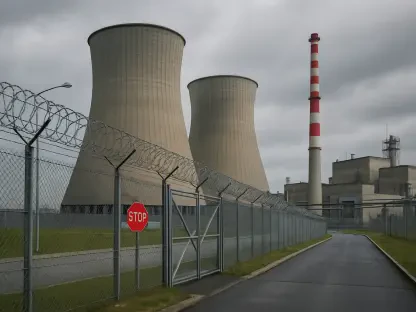The Ontario government’s consideration of a new, large-scale nuclear power plant at the Wesleyville site, near Port Hope, has sparked an extensive dialogue among stakeholders. This ambitious proposal aims to address the province’s escalating energy demands and secure long-term energy supply through nuclear power. The Wesleyville project has garnered widespread support from local leaders, regional officials, and community members, underscoring the potential benefits it promises, ranging from economic growth to environmental sustainability. While the project holds considerable promise, it also presents certain challenges and diverging opinions on the best technological approach for implementation.
Proposal and Site Location
The Ontario government has tasked Ontario Power Generation (OPG) with the due diligence required to construct a new nuclear power station at the Wesleyville site. The location, already maintained by OPG, is strategically poised for such a development, boasting the necessary infrastructure and zoning for electricity generation. When fully operational, the site could deliver up to 10,000 megawatts (MW) of nuclear power, equivalent to powering approximately 10 million homes.
The Wesleyville site, originally intended for an oil-fired generating station in the late 1970s, has remained unused for over four decades due to the oil shock and economic recession of that time. This revitalization project not only addresses unfinished business but also aligns with today’s pressing energy demands. In tandem, Ontario is also planning additional nuclear projects at OPG-owned sites in Nanticoke and Lambton, anticipating a 75% increase in energy demands by 2050.
Economic and Employment Benefits
If developed to its full potential, the Wesleyville site could become Canada’s largest nuclear power plant and one of the most significant globally. The economic implications of this project are vast, forecasting the creation of about 10,500 jobs across Ontario, including 1,700 high-paying positions in Port Hope alone. This development is projected to contribute approximately $235 billion to Ontario’s GDP over a projected 95-year lifespan.
Port Hope Mayor Olena Hankivsky highlighted the transformative potential of clean energy solutions in meeting the community’s rising energy needs. The planned nuclear plant is anticipated to spur job creation, infrastructure enhancements, and increased municipal revenues. To support these goals, OPG and the Ontario government have pledged $1 million for planning and immediate infrastructure needs, with up to $30 million available for further investments, ensuring that the local area is adequately prepared for the incoming changes.
Community and Regional Support
The proposal has generated substantial support among local leaders and regional officials, with vocal endorsements from figures such as Adrian Foster, Mayor of Clarington, and John Henry, Chair of Durham Region. Foster emphasized the job creation potential within the local supply chain, while Henry delineated the essential role of new nuclear projects in securing Ontario’s economic and environmental future.
Engagement with Indigenous communities also forms a critical part of this project’s inclusive development strategy. The Williams Treaties First Nations have expressed interest in the proposal, opening avenues for capacity funding and equity participation. This collaboration aims to ensure that the project’s benefits are equitably shared, fostering partnerships and mutual growth among Indigenous communities and the broader Ontario populace.
Technological Considerations and Challenges
Despite the widespread support, the best technological avenue for meeting Ontario’s energy needs remains a subject of debate. Dr. Chris Keefer, President of Canadians for Nuclear Energy, advocates for the use of Canadian CANDU technology. CANDU reactors, he asserts, offer proven efficiency and economic benefits compared to American technology, which is utilized in other OPG projects such as the small modular reactor at Darlington.
OPG, under the leadership of CEO Nicolle Butcher, is committed to ensuring that the project’s progression hinges on robust stakeholder engagement. The provincial government, led by Energy and Electrification Minister Stephen Lecce, is emphasizing early engagement and comprehensive development planning. This cautious progression accentuates the commitment to responsible development, with a tentative timeline for construction to begin in the early to mid-2030s and operational commencement by the mid-2040s.
Future Prospects and Strategic Importance
The Ontario government’s consideration of constructing a large-scale nuclear power plant at the Wesleyville site, near Port Hope, has ignited a comprehensive dialogue among various stakeholders. This bold proposal aims to meet the province’s growing energy needs and secure a stable, long-term energy supply through nuclear power. The Wesleyville project has attracted significant backing from local leaders, regional officials, and community members, who highlight its potential for economic growth and environmental sustainability.
However, while the project holds substantial promise, it also presents certain challenges. There are diverging opinions on the optimal technological approach for its implementation. Some stakeholders are concerned about potential environmental impacts and the safety of nuclear power, fueling an ongoing debate. Ensuring the project aligns with both provincial energy goals and safety standards is crucial. Balancing these competing interests and addressing public concerns will be essential for the project’s success. The outcome of this extensive dialogue will significantly influence the future of Ontario’s energy landscape.









